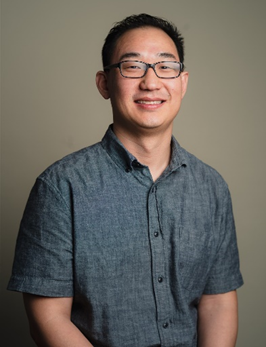9th Biennial Nonclinical Biostatistics Conference
New Frontiers in Drug Discovery and Development
|
FOUR TRACKS |
|
TWO SHORT COURSES |
|
Chemistry, Manufacturing, and Controls Discovery & Biomarkers Safety & Pharmacology Data Sciences and Emerging Tools |
|
A Primer on Spatial Transcriptomics Analysis Making Project Work Better with R |
ABOUT NCB: The Nonclinical Biostatistics Conference grew out of the Nonclinical Biostatistics Leaders’ Forum as a venue for nonclinical statisticians to discuss new and interesting technical methods. It is the only US-based conference devoted fully to the important work of nonclinical statistics, with topic areas spanning early discovery and biomarkers; safety and pharmacology; chemistry, manufacturing, and controls; and data sciences and emerging tools. The conference is sponsored by the American Statistical Association – Biopharmaceutical Section and features speakers from industry, regulatory, and academia.
|
KEYNOTE |
|
The 120th president of the American Statistical Association, Dr. Ji-Hyun Lee, will give the ASA Presidential Address. Dr. Lee’s term begins on January 1, 2025, and her priority will be to build strong bridges both within and outside the ASA community. For more information on Dr. Lee, click here. |
|
|
|
The Keynote Speaker will be Dr. Daniel Lee of Zelus Analytics presenting on Sports Analytics using Bayesian Models. Daniel Lee co-created Stan, the open-source statistical modeling language. He has developed models for a wide range of applications including professional sports teams, vote share for U.S. elections, and clinical trials for cancer and rare disease. For more information on Zelus Analytics, click here. |
|
|
SHORT |
|
A Primer on Spatial Transcriptomics Analysis Clinical success in drug discovery hinges on a deep understanding of disease biology and the mechanisms of drug action. Emerging spatial technologies can quantify hundreds of transcripts up to whole transcriptome at single-cell or near single-cell resolution without losing spatial information. These technologies now offer unprecedented insights into the diversity of cell types, states, their interactions and spatial organization of gene expression within tissues. This enables us to advance our understanding of disease and drug mechanism. This course will provide a brief introduction to spatial transcriptomics technologies widely used in the pharmaceutical and biotech industries. We will discuss data pre- and post-processing, as well as in-depth spatial omics analyses such as the identification of spatial domains. |
|
|
|
Making Project Work Better with R "I need to make sure that my future self isn't going to be mad at my present self." - Kjell Johnson A nonclinical statistician often has many simultaneous data analysis projects. Some of these may have been handed to them and others might eventually be handed to someone else. What are good practices for organizing and maintaining the raw data, source files, results, and other artifacts when doing data analysis? We’ll discuss some tools to organize your project work, painlessly write good R code, manage changes to code and data, write resilient project reports, and enable reproducibility. Participants should have some experience with R, Rmarkdown/Quarto, and have used the RStudio IDE. |
|
|
INVITED SPEAKERS
|
|
Chemistry, Manufacturing, and Controls Optimal Experimental Designs for Process Robustness Studies Understanding Updated Guidance for Analytical Procedures in ICH Q2 and Q14 Panel Discussion on Statistics for Medical Devices and Combination Products |
|
|
|
Discovery / Biomarkers Translating Lupus: Comparative Transcriptional Profiles of Preclinical Lupus Models and Their Relevance to Human Disease Statistical Inference for Heterogeneous Treatment Effects Discovered by Generic Machine Learning in Randomized Experiments |
||
|
|
Safety / Pharmacology Challenges in early-stage drug safety predictions Virtual Control Groups in Preclinical Drug Safety Assessment Sample Size Reduction in Preclinical Experiments: A Bayesian Sequential Decision-Making Framework |
||
|
|
Data Sciences and Emerging Tools Modern Tools to Meet the Challenges of Preclinical Translation to the Clinic Differential Projection Pursuit on Flow Cytometry Data to Identify and Profile Immune Cells Compromised by Exposure to HIV Using R to Submit Research to the FDA: Pilot 4 Successfully Submitted to FDA Center for Drug Evaluation and Research |
Event Type
- NISS Sponsored




